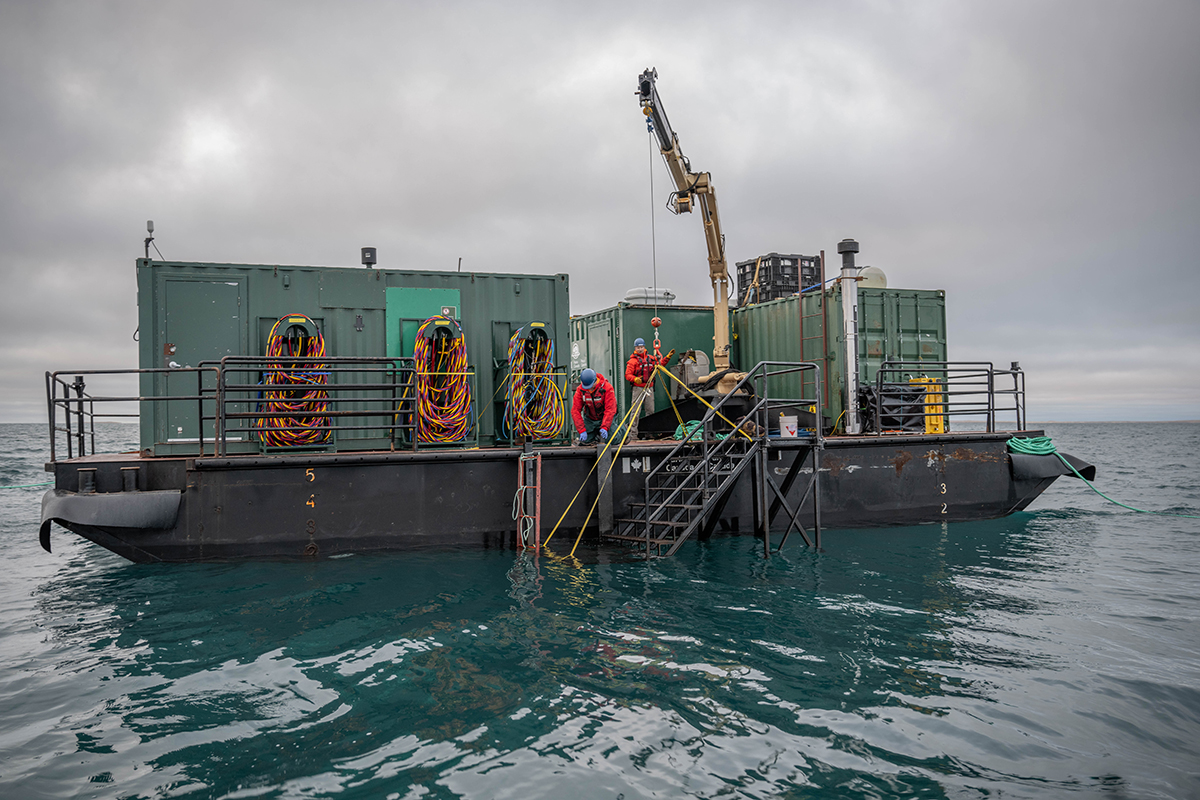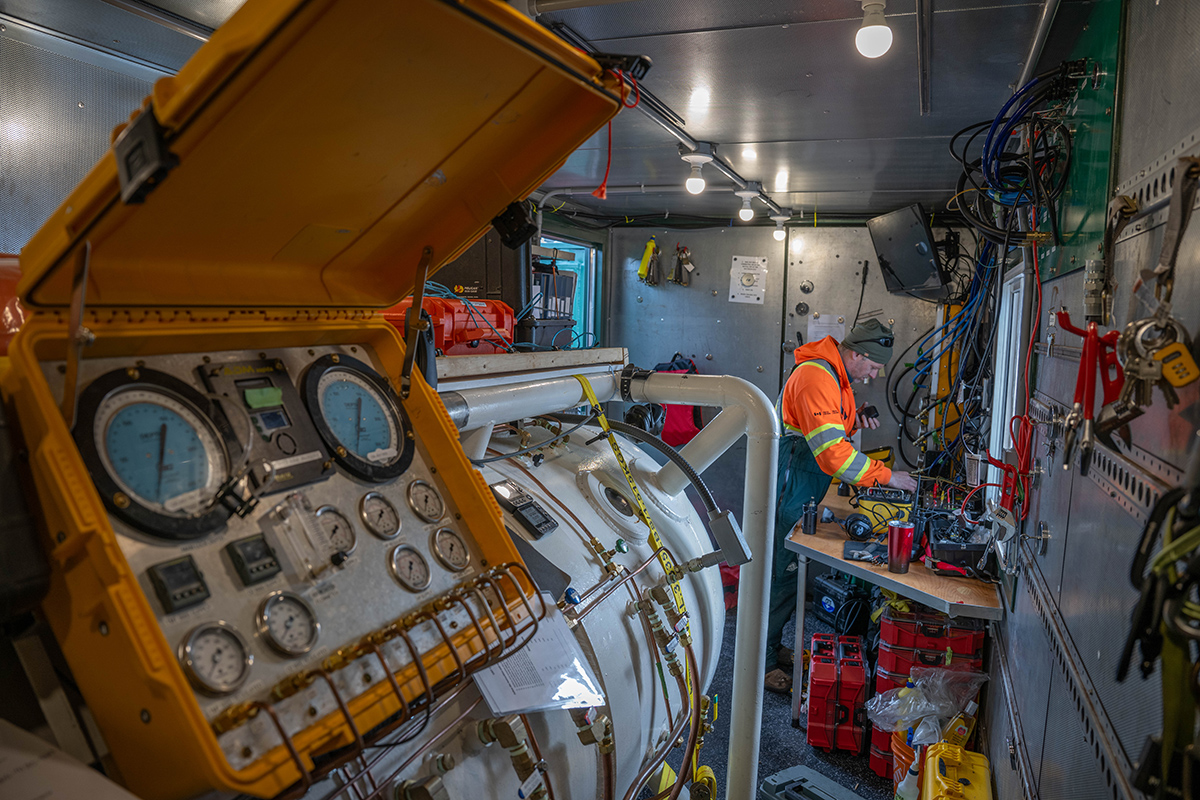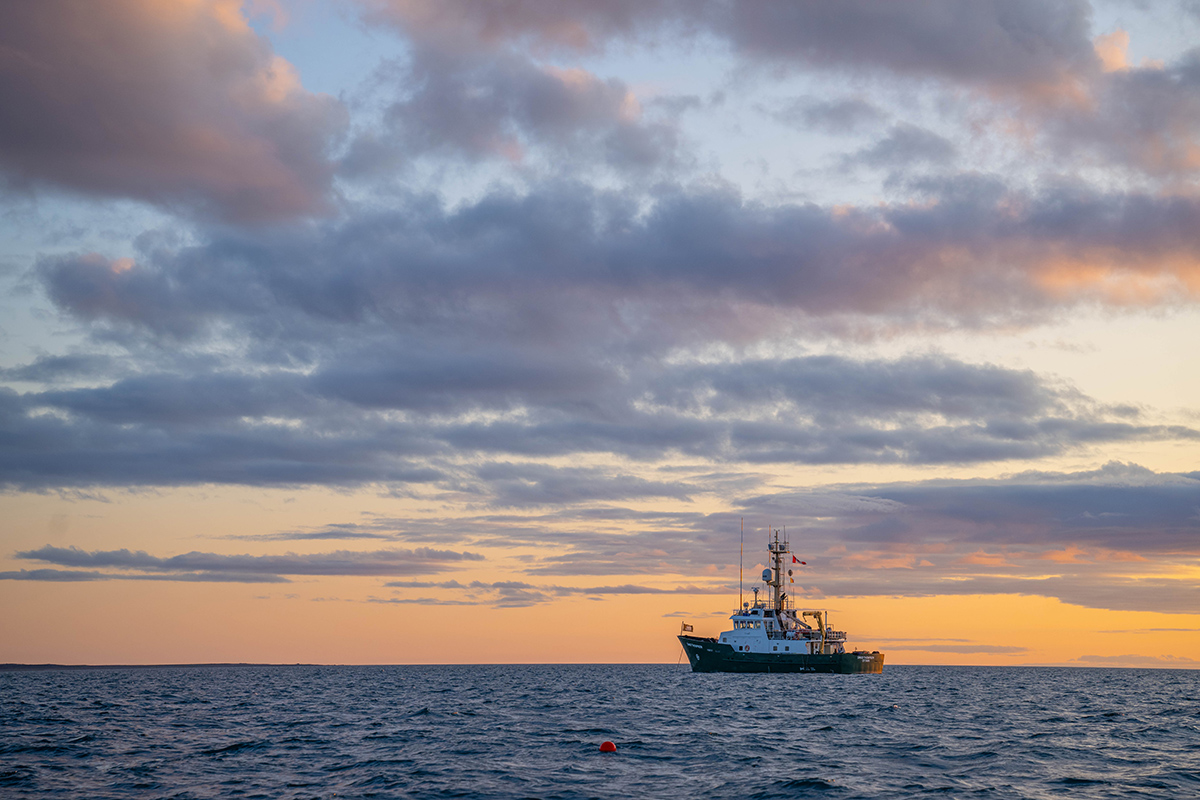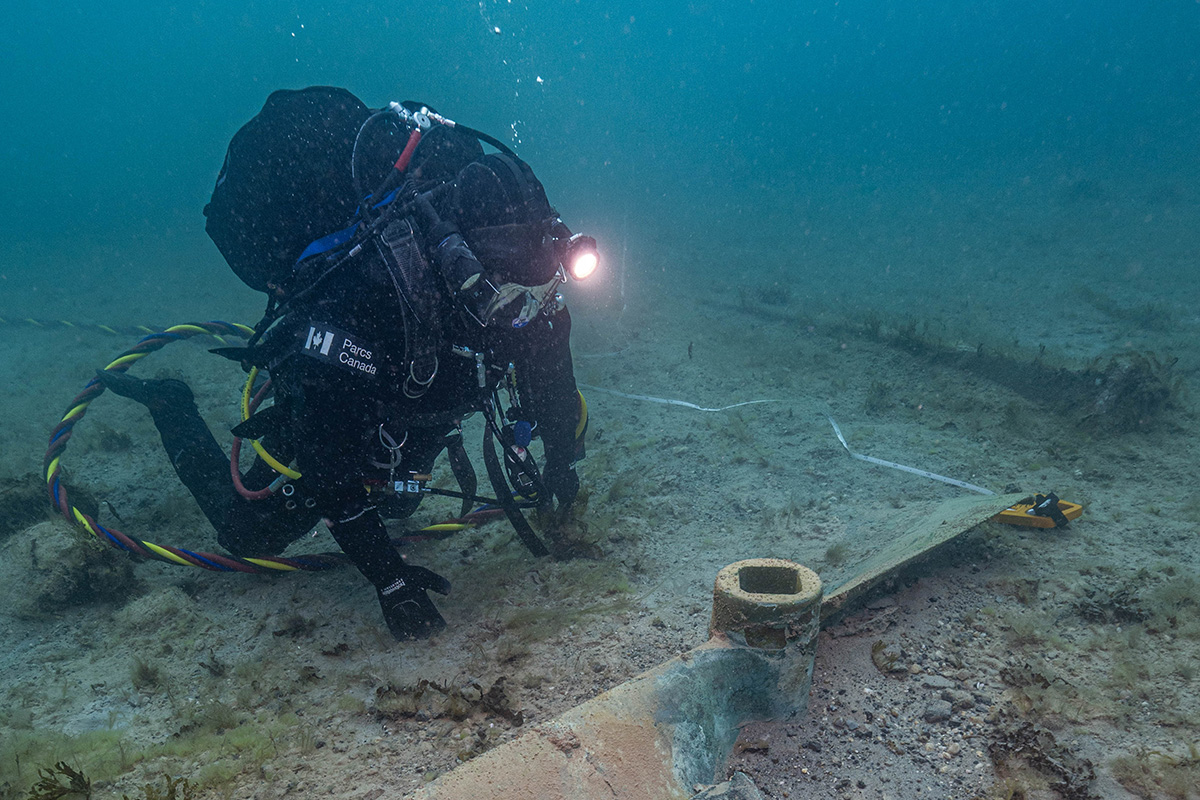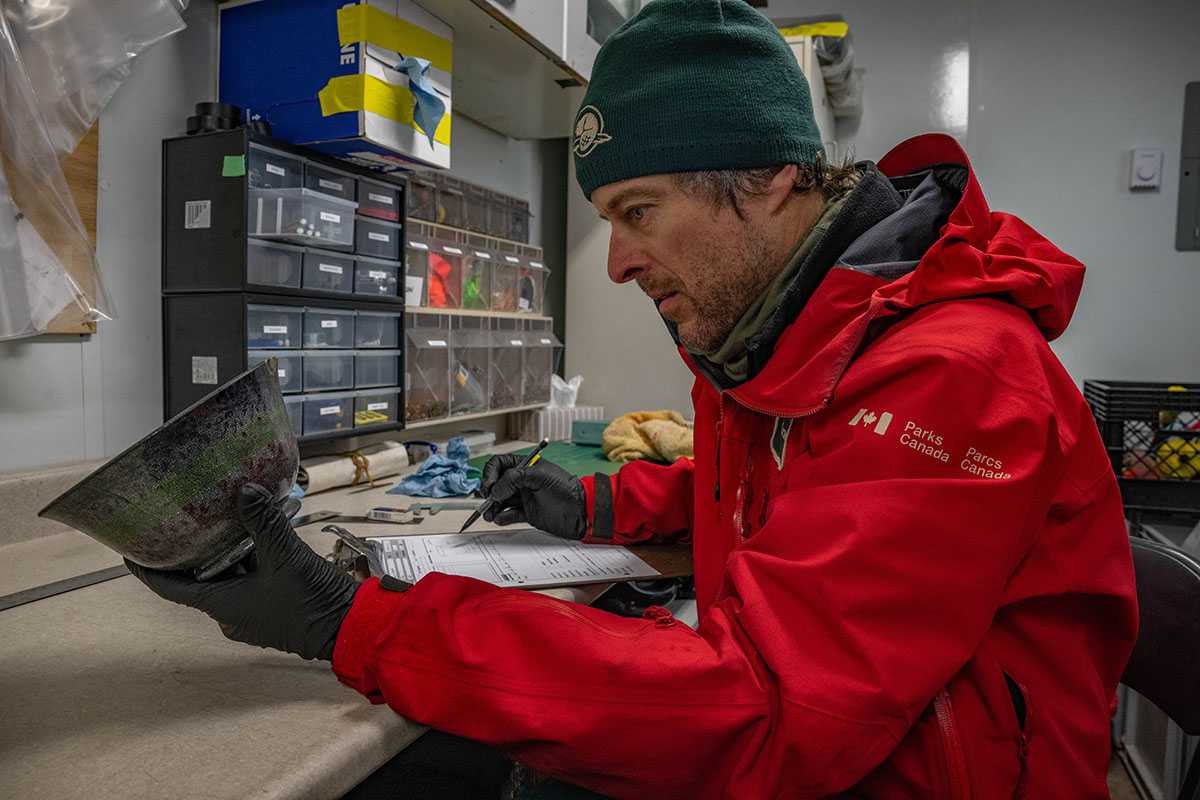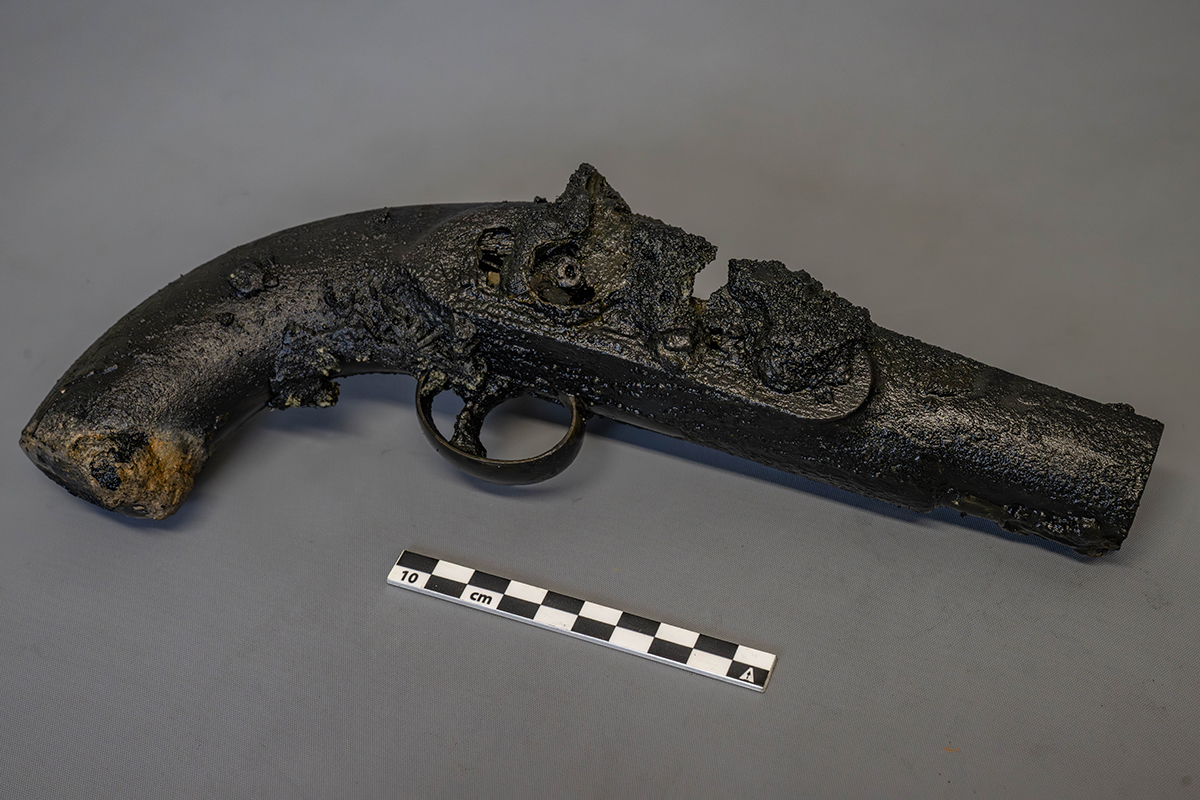
Exploration 2023
Wrecks of HMS Erebus and HMS Terror National Historic Site
On this page
HMS Erebus

On September 4, 2023 members of Parks Canada’s Underwater Archaeology Team (UAT) departed Uqsuqtuuq (Gjoa Haven), Nunavut, aboard the RV David Thompson to resume archaeological fieldwork at the site of HMS Erebus. The team was joined by Brett Seymour, Audiovisual Production Specialist and Deputy Chief of the United States National Park Service (NPS) Submerged Resources Center. Parks Canada and the NPS have an MOU that facilitates personnel exchanges in this case to replace a UAT staff member unable to take part in diving operations. Parks Canada is grateful to the NPS for Brett Seymour’s participation in the project.
Over 12 days between September 5-19 the team conducted 68 dives from Parks Canada’s diving and excavation support barge Qiniqtiryuaq to continue investigating and documenting Erebus, and carefully excavated artifacts to learn more about the Franklin expedition, including naval technology, scientific work, and life aboard the vessel. Archaeologists discovered items related to navigation, science, and leisure in an officer’s cabin – believed to be that of Second Lieutenant Henry Dundas Le Vesconte – including a parallel rule, an intact thermometer, a leather book cover, and a fishing rod with a brass reel.
Everyday items such as a leather shoe or boot bottom, storage jars, and a sealed pharmaceutical bottle were found in an area believed to represent the Captain’s Steward’s pantry. Excavation continued in a cabin believed to be that of Third Lieutenant James Fairholme; notable finds from this cabin include what appear to be fossil souvenirs and they supplement similar fossil finds in the cabin from 2022. The UAT is collaborating with researchers from the Geological Survey of Canada to provenance the fossils.
The team also began excavating a seaman’s chest in the forecastle area where most of the crew lived, discovering numerous artifacts including pistols, military items, footwear, medicinal bottles, and coins. Recovered artifacts will be studied in Ottawa and undergo conservation treatment before many are returned for display at the Nattilik Heritage Centre in Uqsuqtuuq.
The team also carried out dives in the debris field surrounding the wreck and further documented one of the ship’s two propellers (the spare) first found and recorded in 2015. As well, the team found an ice anchor in the debris field. This is the first such anchor found on the wrecks of either Erebus or Terror.
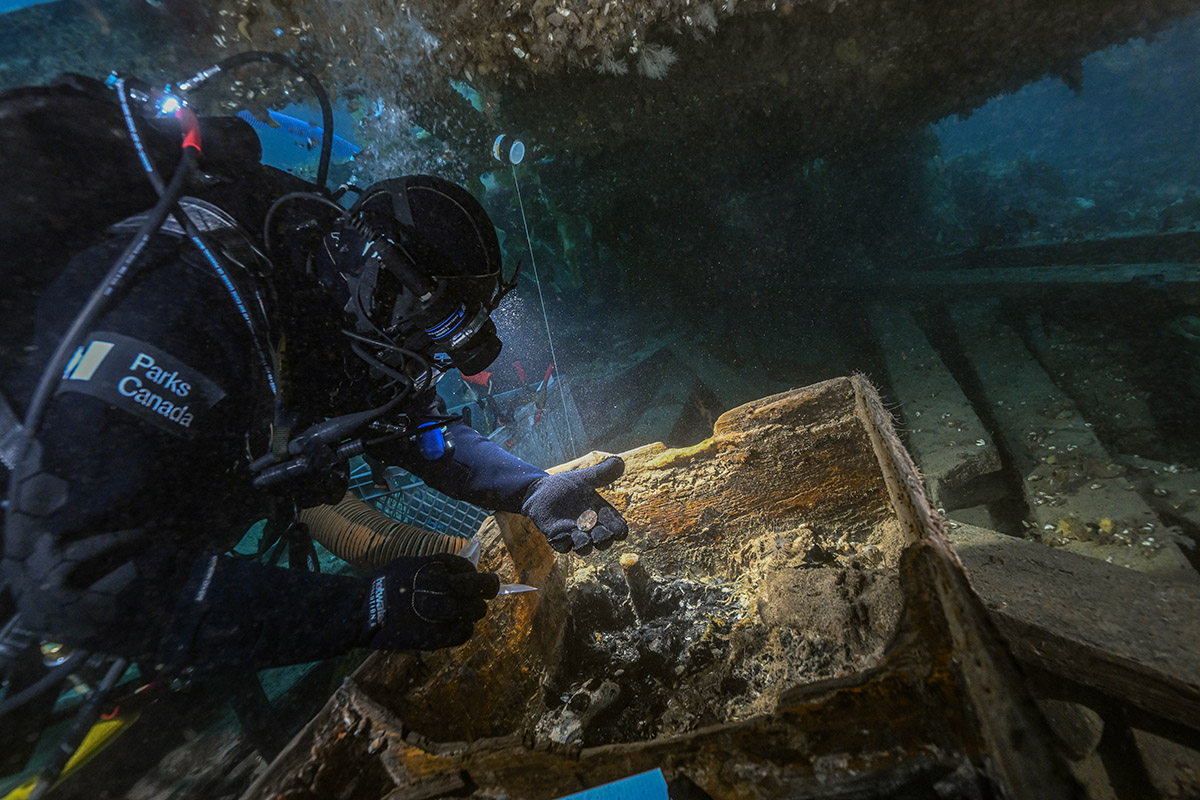
The shallow depth of HMS Erebus means that the wreck is affected by natural forces, especially storm waves likely to increase with climate change. Team members have recorded and tracked changes to the site since it was first discovered almost ten years ago in 2014, including collapse of the ship’s upper deck and sediment scouring around the hull. The team thoroughly documented the current condition of the site with thousands of high-resolution digital photos, which were used to produce highly accurate three-dimensional models to better understand how the site is changing over time.
The UAT completed diving operations at the Erebus on September 18 and arrived back at Uqsuqtuuq with the David Thompson and Qiniqtiryuaq on September 20, 2023.
The UAT recently worked with the engineering consulting firm Nunami-Stantec to model the hydrodynamic regime at the wrecks of Erebus and Terror to better understand environmental forces which pose an increased threat to the sites, in particular Erebus. It is increasingly clear that changing weather on account of climate change poses a heightened risk to Erebus. Wood and sediment samples were also collected to learn more about local environmental conditions at the site. Wood samples collected in 2023 will be studied by a team from the National Museum of Denmark led by Dr. David Gregory, as part of a recent research partnership with Parks Canada, while sediment samples will be studied by specialists at Université Laval and Ottawa University.
Parks Canada held an event at the Nattilik Heritage Centre on September 21 to share some of the 2023 discoveries with community members.
HMS Terror
The UAT also made a short visit to the wreck of HMS Terror with the RV David Thompson between September 22-24, 2023 to conduct remote sensing recording. This included multi-beam echosounder bathymetric surveying of the wreck to capture a snapshot of its condition and to widening the mapping of a vessel access corridor into this mostly uncharted bay. As well, the site was recorded with the RV David Thompson’s sub-bottom profiler to better understand its stratigraphy.
Site management
Parks Canada and Inuit are working in partnership to explore and manage the wrecks of HMS Erebus and HMS Terror. The Wrecks of HMS Erebus and HMS Terror National Historic Site is co-managed by Parks Canada and the Nattilik Heritage Society in Uqsuqtuuq. The Nattilik Heritage Society also administers the Wrecks Guardian Program and the Nattilik Heritage Centre Expansion project to house a new exhibition in 2025. Recovered artifacts are co-owned by Parks Canada and the Inuit Heritage Trust.
Transcript
0:00 [This video has no spoken language.]
0:02 [music]
0:04 On September 4, 2023, Parks Canada’s Underwater Archaeology Team
0:09 departed Gjoa Haven, Nunavut,
0:13 aboard the Research Vessel David Thompson to resume archaeological fieldwork at the site of HMS Erebus.
0:17 Over 12 days, the team conducted 68 dives from Parks Canada’s diving
0:23 and excavation support barge Qiniqtiryuaq (Inuktitut word for the one that looks and finds) to continue excavating and studying the HMS Erebus site
0:27 to learn more about the vessel and the overall Franklin Expedition.
0:33 Parks Canada and Inuit are working in partnership to explore and manage the wrecks of HMS Erebus and HMS Terror.
0:39 The Wrecks of HMS Erebus and HMS Terror National Historic Site is co-managed by Parks Canada and the Nattilik Heritage Society in Gjoa Haven.
0:46 The shallow depth of HMS Erebus means that the wreck is affected by storm waves.
0:49 Archaeologists have recorded and tracked changes to the site since it was first located almost ten years ago in 2014,
0:54 including collapse of the ship’s upper deck and sediment scouring around the hull.
0:58 The team began excavating a seaman’s chest in the crew’s accommodation area,
1:04 locating numerous artifacts including pistols, military items, footwear, medicinal bottles, and coins.
1:14 Archaeologists also recovered artifacts related to scientific work, navigation, and daily life in officers’ cabins,
1:20 including a parallel rule, an intact thermometer, a leather book cover, and a fishing rod.
1:32 Every artifact that is collected from the wreck is co-owned and managed by the Inuit Heritage Trust and Parks Canada."
1:36 The artifacts are sent to Parks Canada’s facility in Ottawa, Ontario, for further study and conservation treatment.
2:27 Find out more at parks.canada.ca/wrecks
Related links
- Date modified :
